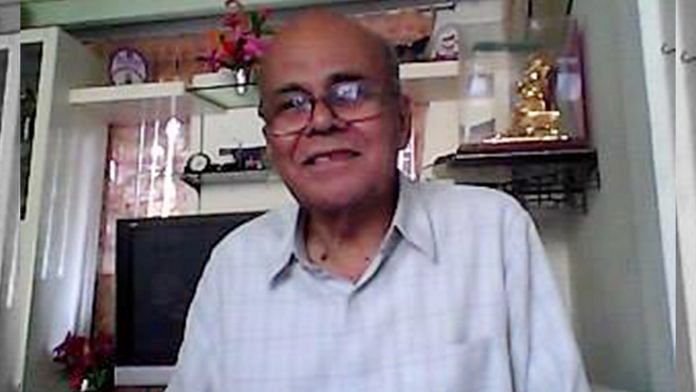Mumbai: Purushottam Narayan ‘Dada’ Samant, who committed suicide in Mumbai Friday, was a veteran trade union leader who lived in the shadow of his younger brother Datta Samant.
Dada Samant, father-in-law of Maharashtra cabinet minister Jitendra Awhad of the Nationalist Congress Party, lived with his family at Abhinav Nagar in Mumbai’s Borivali (West) suburb. According to the Dahisar police, when he didn’t respond to their voices, family members broke open the locked door and found him hanging from the ceiling fan.
The 91-year-old left behind a suicide note saying he was ending his life due to prolonged illness, but the police has registered a case of accidental death.
Also read: Maharashtra minister Jitendra Awhad self-quarantines after contact with positive patient
Overshadowed by his brother
Dada Samant was the older brother of legendary trade union leader and politician Datta Samant, who was assassinated in 1997.
The older Samant came into the trade union movement long before his brother, and shot to prominence in the 1960s when railway workers were unhappy with government policies. Dada Samant played a pivotal role in unionising the workers in what was then Bombay, and later worked as a technical officer at the Jiyajeerao Cotton Mills in Gwalior, Madhya Pradesh. He returned to Bombay in 1981.
A year later, Datta Samant led the year-long textile mill workers’ strike in Bombay, which led to the closure of a majority of Bombay’s textile mills and pushed the workers into poverty. Dada Samant is said to have differed strongly with his younger brother on the strike, saying taking on the textile mill owners would break the workers’ backs.
Despite being a leader in his own right, the heavy shadow of his firebrand younger brother hung over Dada Samant. He was always known as ‘Datta Samant’s brother’, and despite his own strong leadership qualities, he could never really shake off the comparisons, said a friend, who did not want to be named.
Datta Samant had broken every rule in the trade union movement when taking on the proprietors and managements of various companies, said some of those who were part of the trade movements over the years.
After Datta Samant’s assassination, Dada Samant headed the Kamgar Aghadi, which the former had founded, from 1997 to 2011.
“After the assassination of Datta, Dada did not find the same support from the workers in the unions he led. Dada was not as aggressive as his brother. The brothers were poles apart,” said a former union colleague.
Lack of assertiveness
Liberalisation and the advent of the contract system of employment was in a way responsible for the unions losing their glamour, said Prakash Bal Joshi, well-known writer and artist who has studied the labour movement closely.
“The contract system was paying more and those heading the unions started getting frustrated. Dada too felt that liberalisation had dealt a big blow to the workers’ movement,” Joshi told ThePrint.
During his many interactions with Dada Samant, Joshi felt a lack of assertiveness in the leader. “I always sensed a reserved quality in him. Though supportive of the movement, Dada was not outspoken. Though he took over the unions after the assassination of his brother, he was not able to create a powerful image of his own,” said Joshi.
One of Dada Samant’s last notable acts in April 2010, when he slapped a legal notice on film-maker Mahesh Manjrekar for a “distorted” portrayal of his brother in the Marathi film Lalbaug-Parel.
Dada Samant led a delegation of the Maharashtra Girni Kamgar Union, and staged a demonstration outside the Bharatmata Theatre in Lalbaug, where the film was being screened.
Samant’s contention was that the film had portrayed his brother as being solely responsible for the closure of the textile mills following the strike.
Also read: Indian trade unions: united in labour cause, divided over RSS ideology







Datta Samant led the year-long textile mill workers’ strike in Bombay, which led to the closure of a majority of Bombay’s textile mills and pushed the workers into poverty.
What is “legendary vision”in driving millions of workers into poverty?
Maybe the ideology the writer supports.